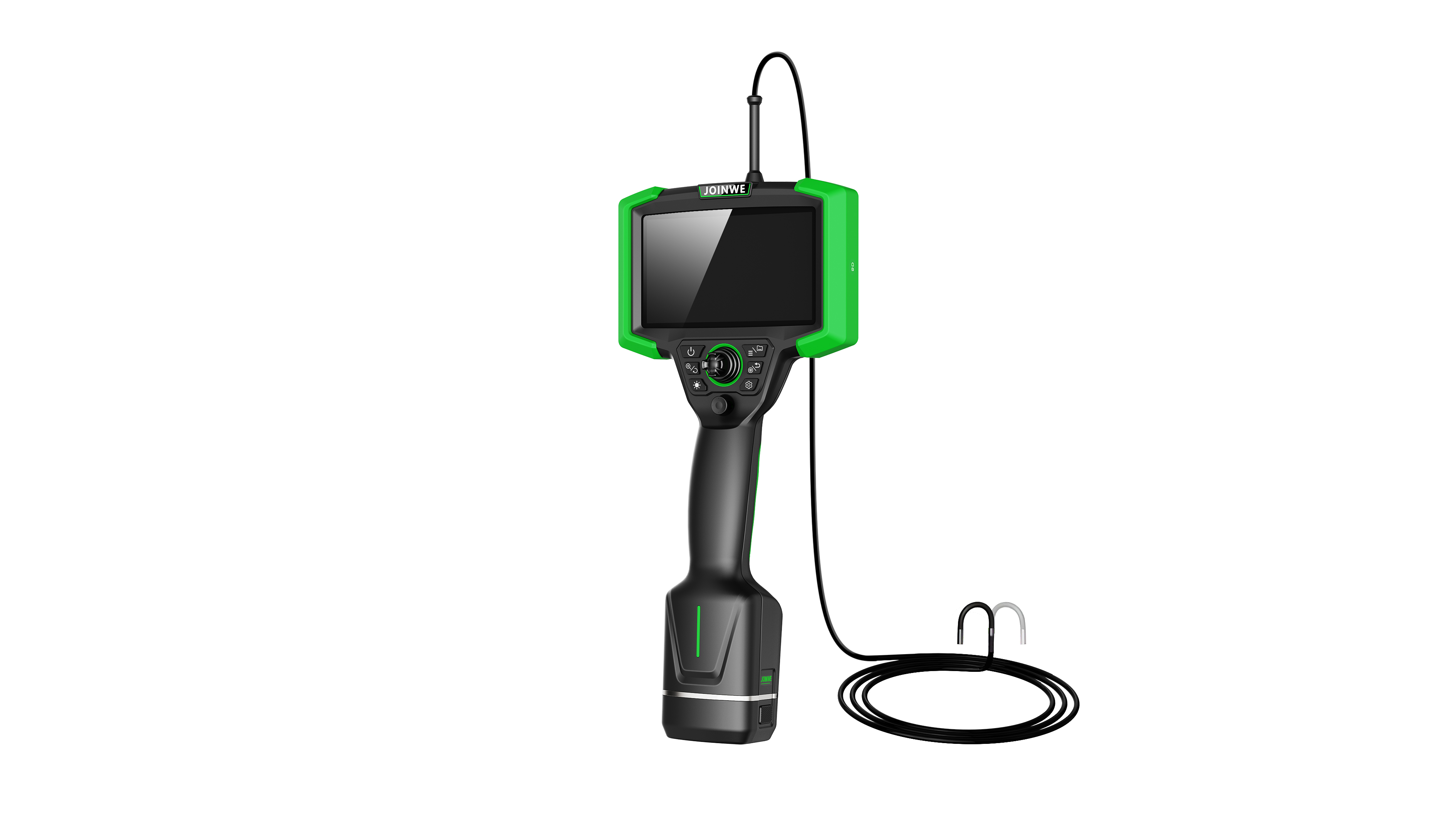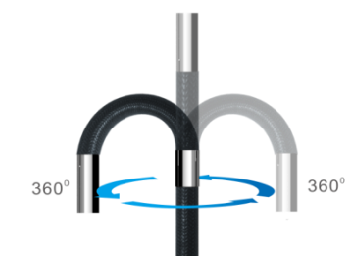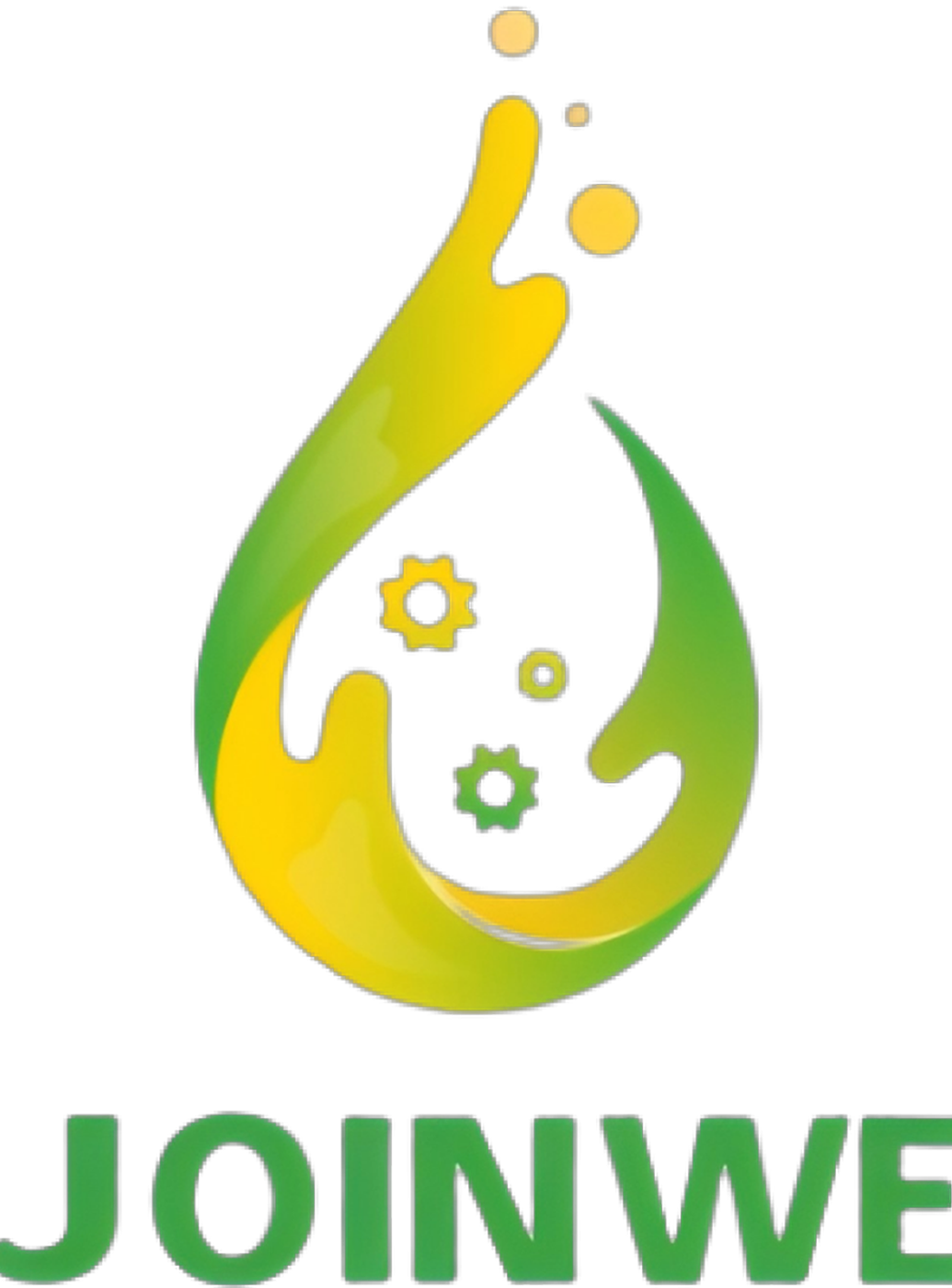Directional Control Function of Industrial Endoscope
The directional control function of the industrial endoscope integrates advanced technologies such as adjustable speed adjustment, following lock, guided stepping, auto-reset, and overload protection. These innovations provide an efficient and precise inspection solution for complex industrial environments.
I. Detailed Introduction of Core Functions:
1. Adjustable Speed Adjustment
Function Description:
Allows inspectors to flexibly adjust the probe’s movement speed according to inspection needs. The fast mode is ideal for large-area scanning, while the slow mode supports detailed observation.
Technical Implementation:
Utilizes an electric control system to achieve stepless speed regulation during directional operation, ensuring smooth and stable control.
2. Following Lock
Function Description:
During inspection, the probe can automatically lock onto a target position, maintaining a stable field of view and minimizing shaking caused by manual handling.
Technical Implementation:
Incorporates a built-in gyroscope or electronic compass to monitor the probe’s orientation in real time. A servo motor then automatically adjusts the position to ensure accurate locking.

3. Guided Stepping
Function Description:
The probe can move in predefined increments, making it suitable for applications that require precise positioning during inspection.
Technical Implementation:
Utilizes a stepper or servo motor to achieve micron-level displacement, supporting multi-axis linkage for greater flexibility.
4. Auto-Reset
Function Description:
After inspection, the probe automatically returns to its initial position, reducing manual operations and improving overall efficiency.
Technical Implementation:
Equipped with a built-in reset mechanism. Position sensors detect the current location of the probe and automatically guide it back to its starting point.
5. Overload Protection
Function Description:
If the probe encounters resistance or gets stuck, the system automatically halts movement to prevent damage.
Technical Implementation:
Force sensors continuously monitor the stress on the probe. When the load exceeds a predefined threshold, a protection mechanism is triggered.
II. Technical Advantages and Application Scenarios
Enhanced Inspection Efficiency:
The combination of variable speed adjustment and stepwise movement enables quick coverage of large areas while allowing for detailed inspection of key components.
Extended Equipment Lifespan:
Auto-reset and overload protection functions help prevent damage from operational errors, thereby prolonging device life.
Adaptability in Complex Environments:
In confined spaces such as pipelines or inside machinery, stepwise movement and follow-lock features allow for highly accurate inspections.

III. Application Cases
Aerospace Engine Inspection:
Utilizing the stepwise movement function, the endoscope enables point-by-point inspection of turbine blades, combustion chambers, and other components, allowing for the detection of microcracks.
Petrochemical Industry:
During pipeline inspections, the combination of auto-reset and overload protection ensures the safe navigation of the probe through complex bends.
The directional control function of the industrial endoscope, through the integration of multiple advanced technologies, significantly enhances inspection precision and efficiency. It demonstrates irreplaceable value in critical industries such as aerospace, energy, and automotive manufacturing.





